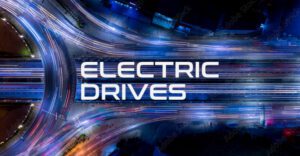- With continuous improvements to battery technology (and the public charging network), range anxiety on modern EVs is a thing of the past.
- However, for those looking to squeeze every ounce of efficiency out of their electric car this summer, there are still a number of steps you can take to reach record range figures.
- These are the best ways to maximise electric car range and efficiency in the summer months.
How to maximise electric car efficiency in hotter weather
Whilst even the cheapest electric cars on the market already pack impressive range statistics, and that’s not forgetting the longest range electric cars, there’s still no harm in maximising efficiency to save yourself even more in EV running costs.
Cold conditions for EVs are not ideal for efficiency, whereas a temperature between 20 and 25 celsius is where an EV performs at its best – typically coinciding with the summer for many countries. However, there are still steps you can take in the summer months to maximise efficiency, particularly when the thermometer rises above that sweet spot.
Air conditioning vs windows down
To keep yourself cool whilst maximising efficiency, at slower speeds around town and in heavy traffic, putting your window down will save energy compared to running the air conditioning. However, at higher out-of-town speeds, the drag created by an open window will put more energy demand on your electric motor than just running the air conditioning. The speed at which this occurs depends on the car, but previous research has shown around 50mph to be the sweet spot.
Using the cabin preconditioning feature found on most EVs is another way to maximise the efficiency of your air conditioning usage, by cooling down your car whilst it’s still receiving power from a charger, without eating into any battery range.
Driving style
Slightly warmer temperatures might be better for EV efficiency, but summer heat still doesn’t defy the basic rules of efficient EV driving. Much like you should also do in colder weather if you want to maximise range and efficiency, you should mostly use light to moderate acceleration, and make the most of regenerative braking – particularly on downhill sections. Using the ‘eco’ mode commonly found on EVs can help you keep your acceleration down, if you naturally have a bit of a lead foot whilst driving.
Check your tyre pressure
Variations in temperature as we come into the warmer summer months can cause the pressure within your tires to fluctuate from their recommended pressures. Manufacturers set these defined pressures with both safety and efficiency in mind, so it’s important to frequently check these are at the correct level before setting off on a trip.
Consider solar
Typically, with hotter weather comes increased and stronger sunlight, which are the perfect conditions for solar energy generation. Implementing a solar system at your home to charge your EV, and particularly one with the ability to sell energy back into the grid, could bring down your cost of EV ownership even further.


